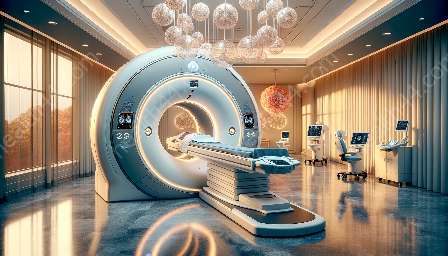PET scanners have revolutionized the field of medical imaging and play a crucial role in the diagnosis and treatment of various conditions. These advanced devices enable healthcare professionals to capture detailed images of the body's internal functions, providing valuable insights into the physiological processes at the molecular level. Let's delve into the captivating realm of PET scanners and their impact on medical imaging devices and equipment.
Understanding PET Scanners
PET (Positron Emission Tomography) scanners are sophisticated imaging tools that utilize a radioactive substance known as a tracer to visualize and measure metabolic processes in the body. The tracer, typically a form of glucose, is administered to the patient and accumulates in areas with high metabolic activity, such as tumors or areas of inflammation. The PET scanner then detects the emitted positrons from the tracer, producing detailed 3D images that reveal the functioning of organs and tissues at a cellular level.
Integration with Medical Imaging Devices
PET scanners are an integral component of medical imaging devices, complementing other modalities such as CT (Computed Tomography) and MRI (Magnetic Resonance Imaging). By combining PET with CT or MRI, healthcare professionals can obtain both anatomical and functional information, allowing for more accurate diagnoses and treatment planning. This fusion of imaging modalities enhances the capabilities of medical devices and advances the field of diagnostic imaging.
The Role of PET Scanners in Medical Devices & Equipment
As part of the broader landscape of medical devices and equipment, PET scanners contribute significantly to a wide range of medical specialties. Oncology, neurology, and cardiology are among the fields that benefit immensely from the insights provided by PET imaging. By visualizing metabolic activity and identifying abnormal patterns, PET scanners aid in the early detection and monitoring of cancer, neurological disorders, and cardiac conditions, leading to improved patient outcomes and personalized treatment strategies.
Advancements in PET Scanner Technology
The evolution of PET scanner technology has been marked by continuous innovation, resulting in enhanced image quality, shorter scan times, and reduced radiation exposure for patients. Developments such as time-of-flight PET, which improves spatial resolution, and the use of digital detectors have propelled PET imaging to new heights, opening avenues for research and clinical applications.
Future Prospects and Impact
Looking ahead, the future of PET scanners and their integration with medical imaging devices holds promising possibilities. With ongoing research and development, there is potential for further refinement of PET imaging techniques, including the exploration of new tracers to target specific biological processes. Additionally, the integration of artificial intelligence and machine learning algorithms with PET data analysis is expected to enhance diagnostic accuracy and streamline clinical workflows.
Conclusion
PET scanners stand as remarkable tools in the realm of medical imaging devices, offering unparalleled insights into the inner workings of the human body. Their synergy with other imaging modalities and their pivotal role in medical devices and equipment underscore their significance in modern healthcare. As technology continues to advance, PET scanners are poised to shape the future of medical imaging, driving precision medicine and enabling breakthroughs in diagnosis and treatment.


